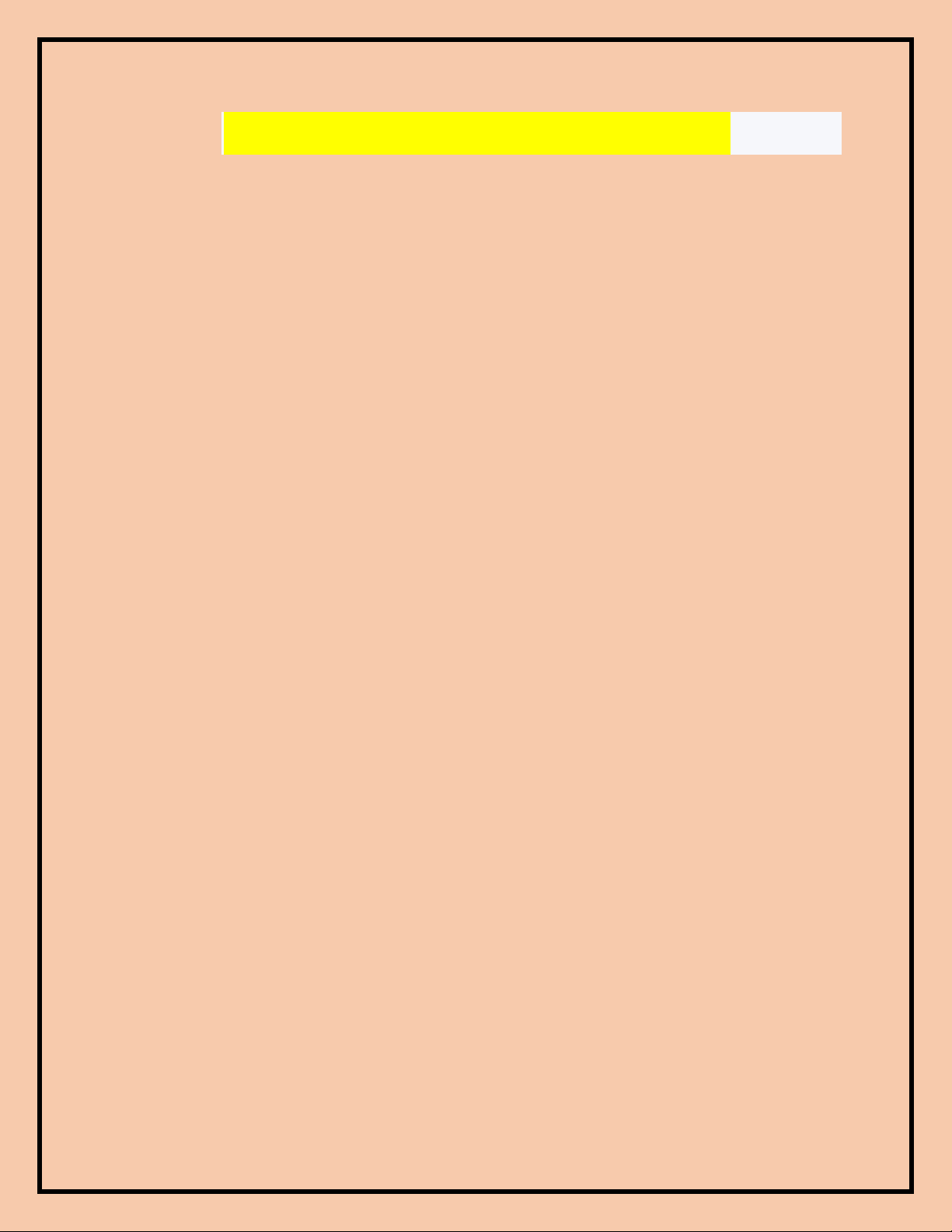
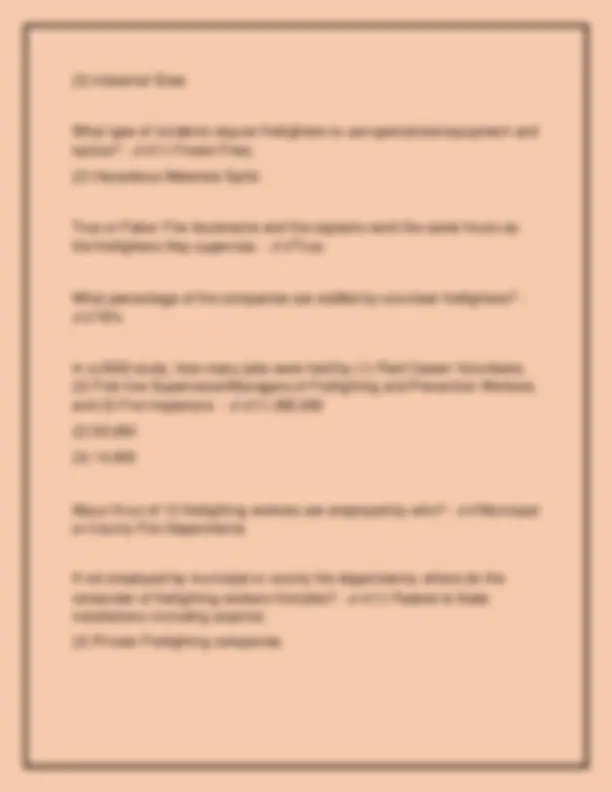
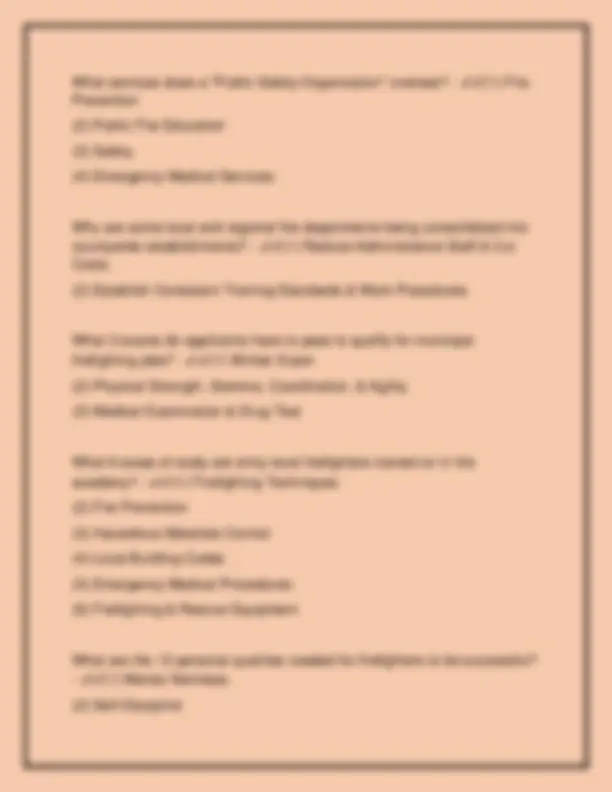
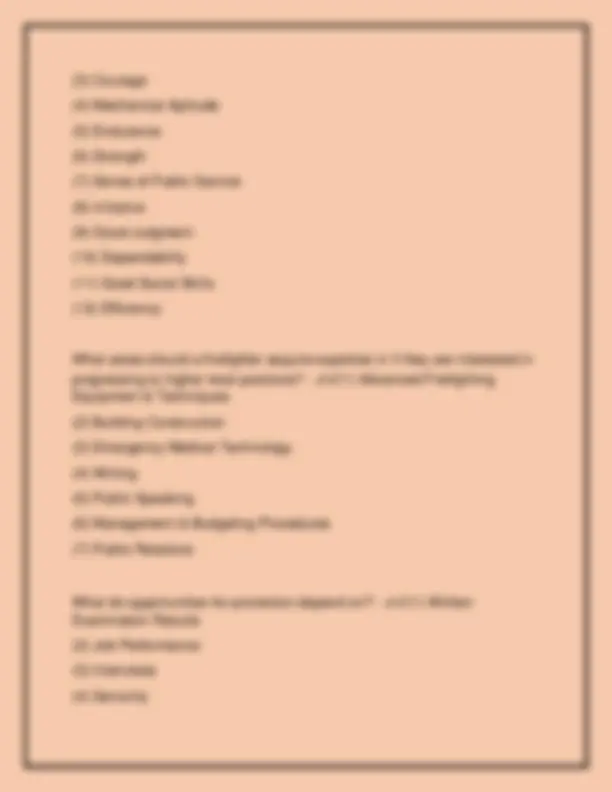
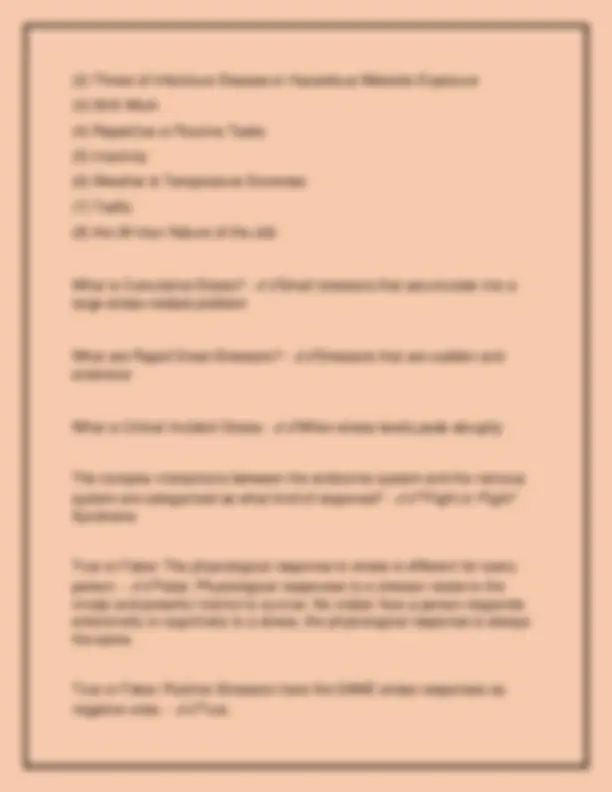
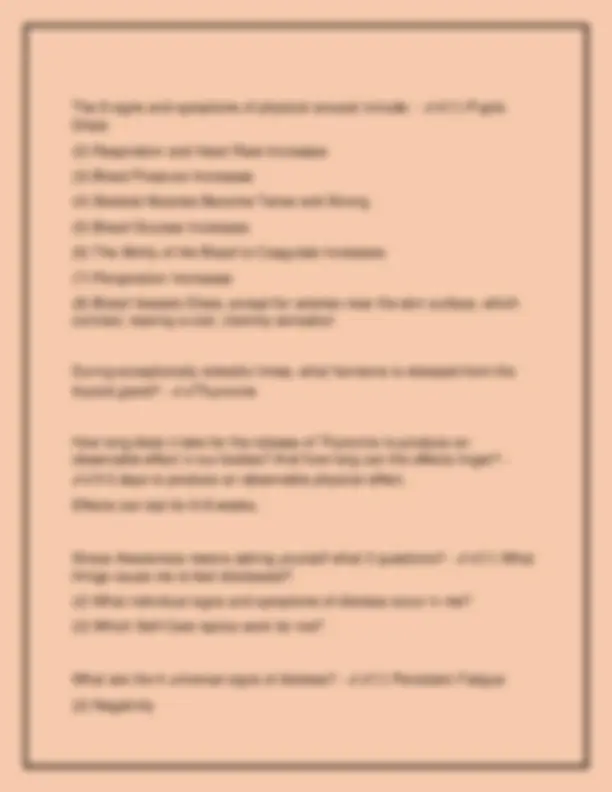
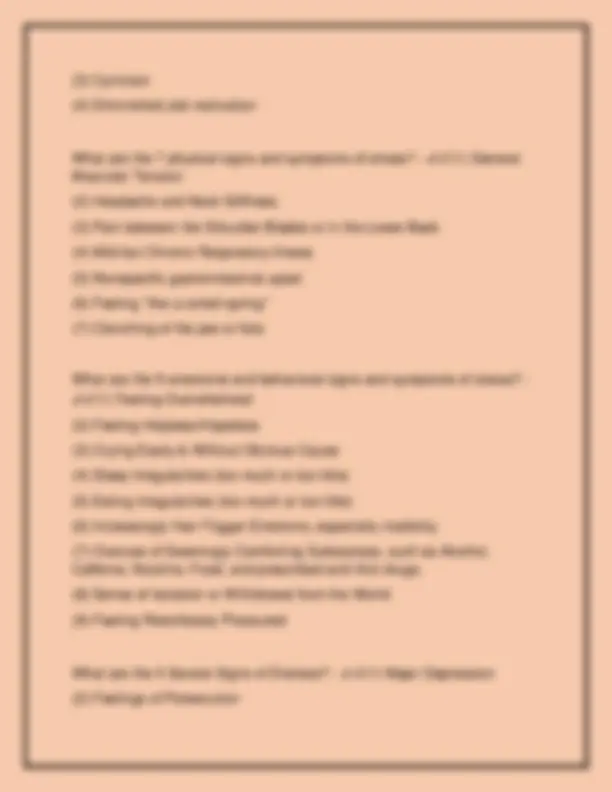
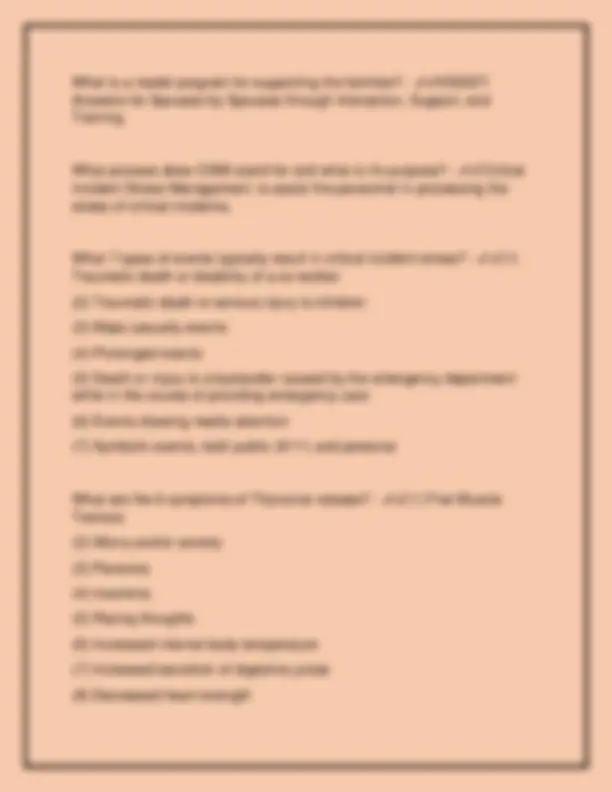
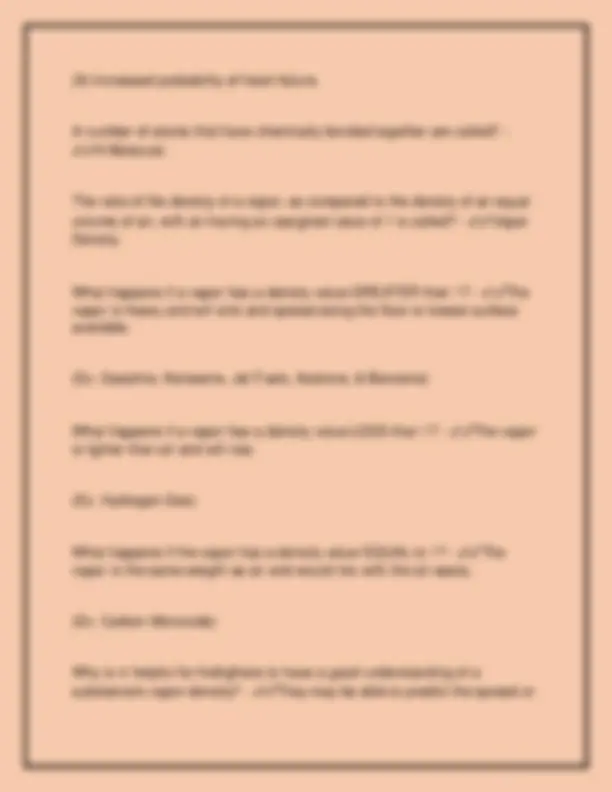
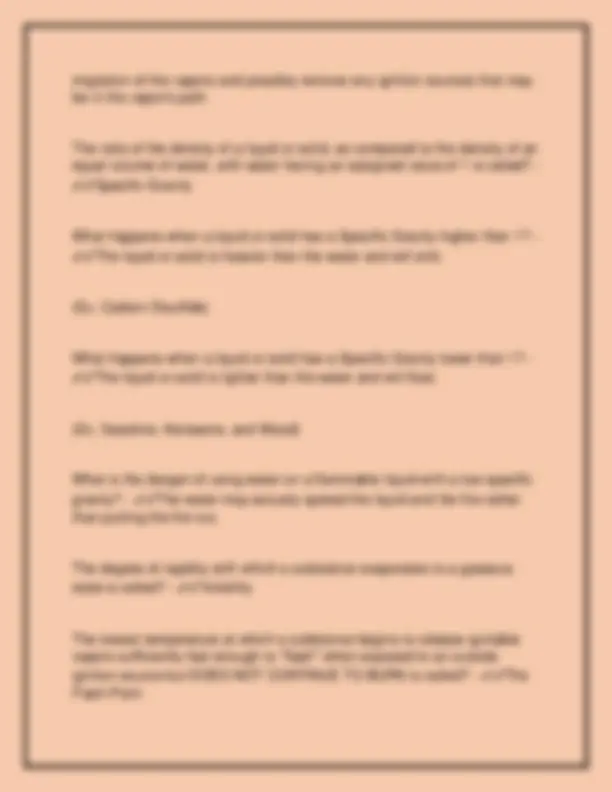
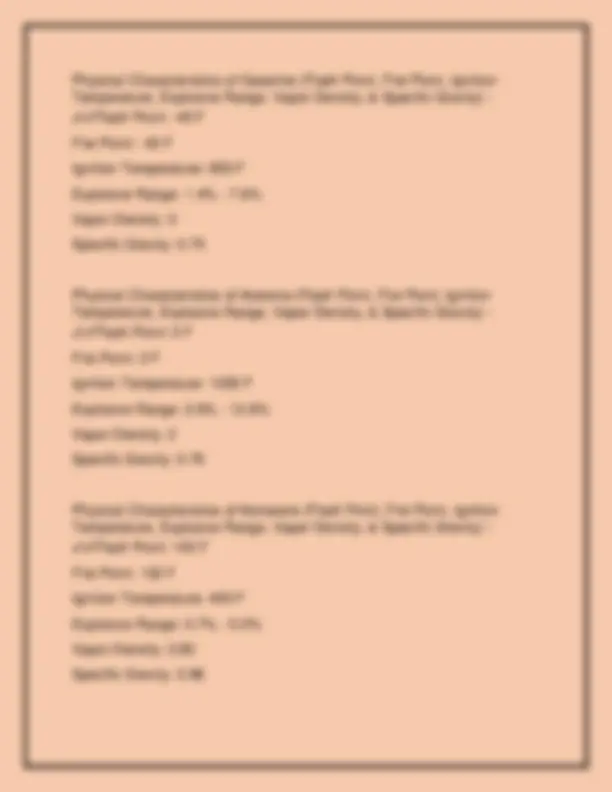
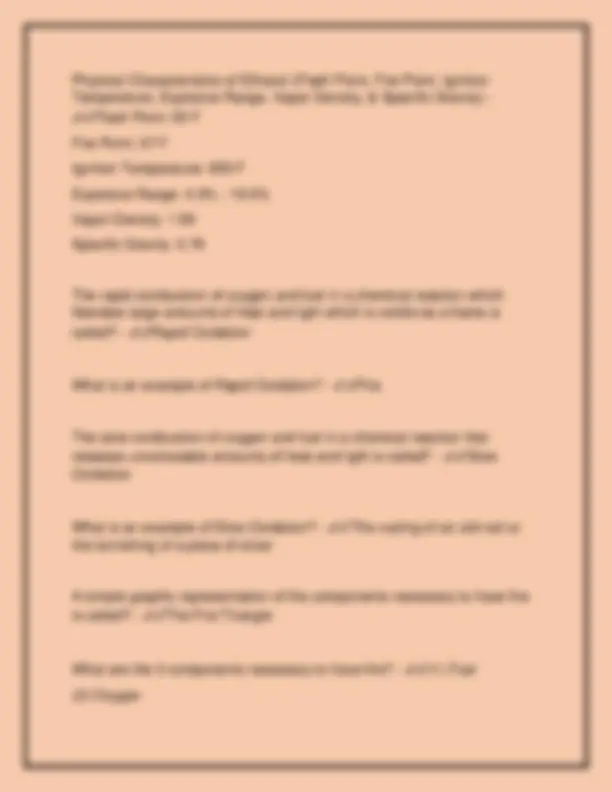
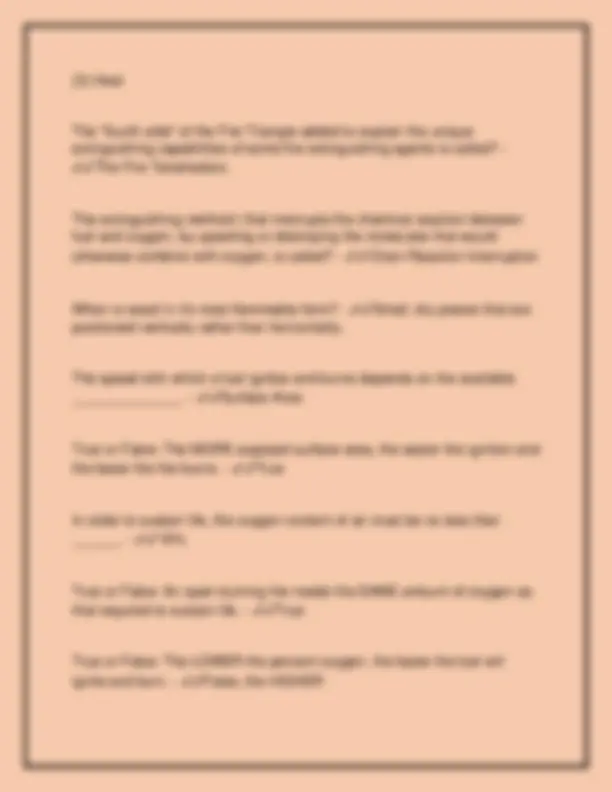
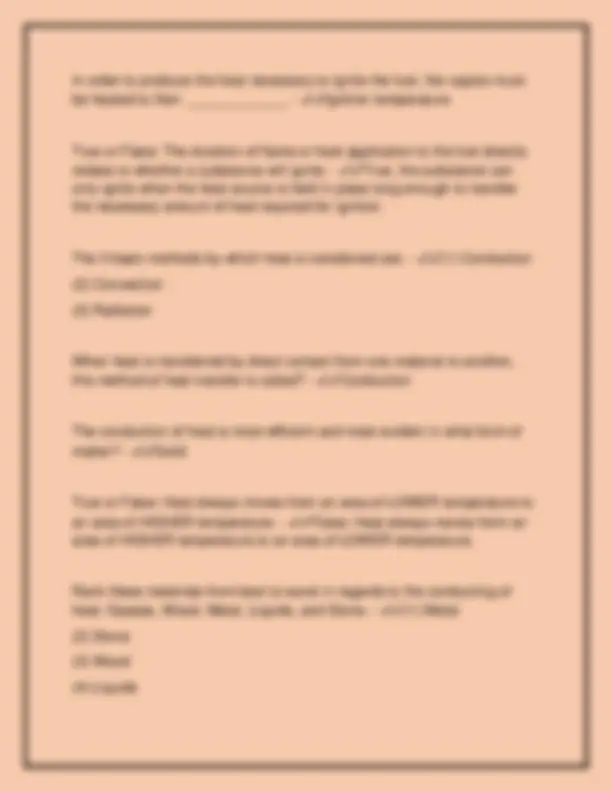
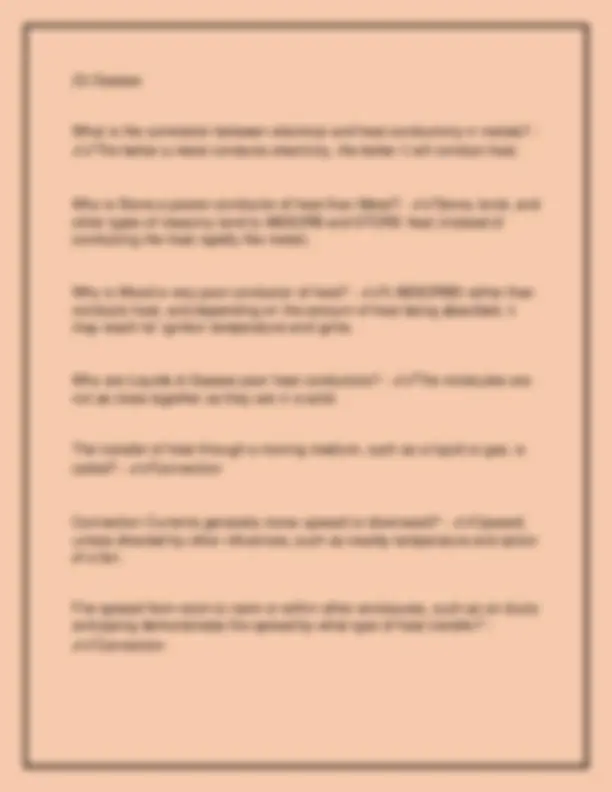
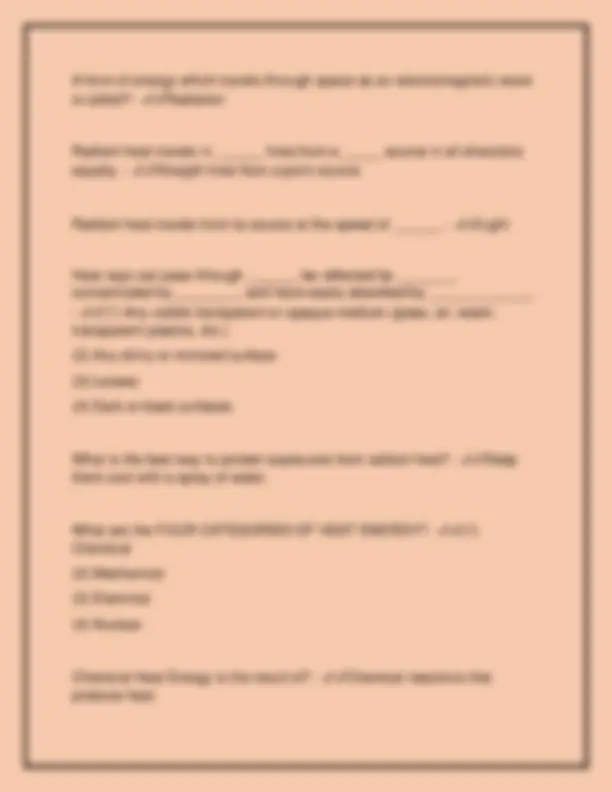
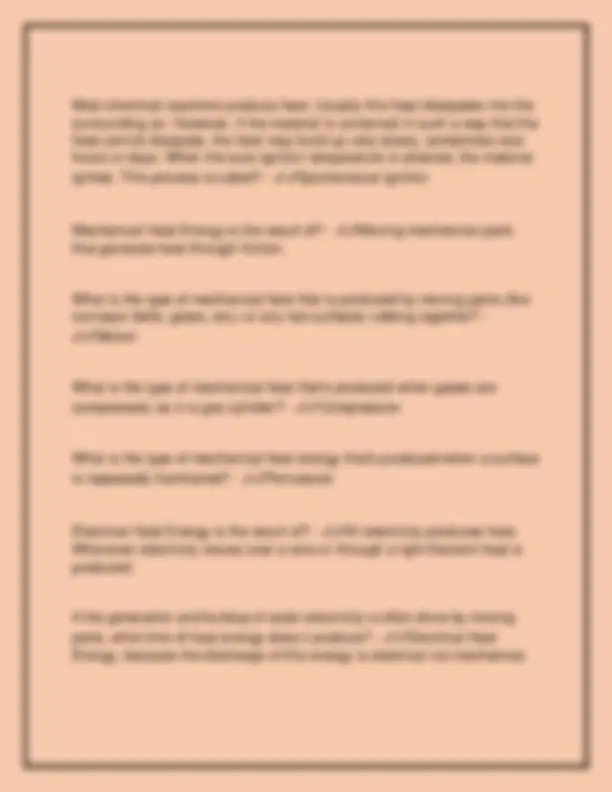
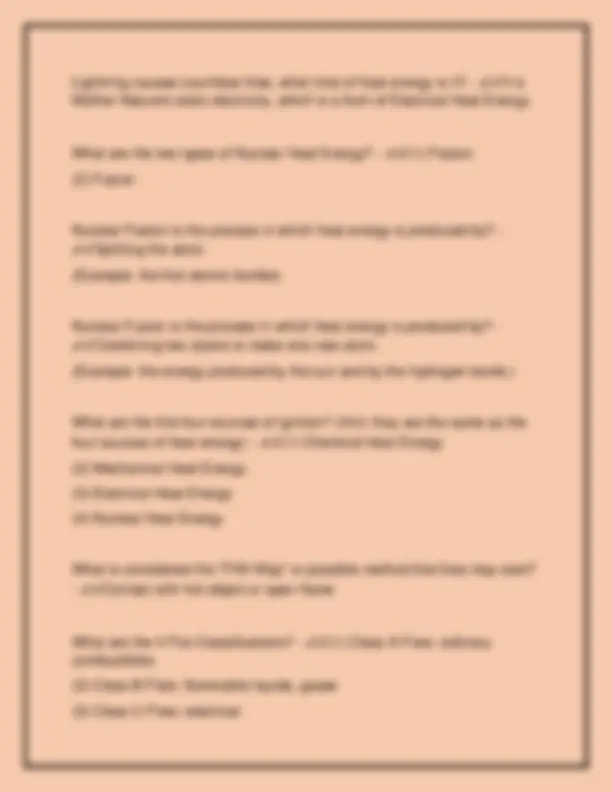
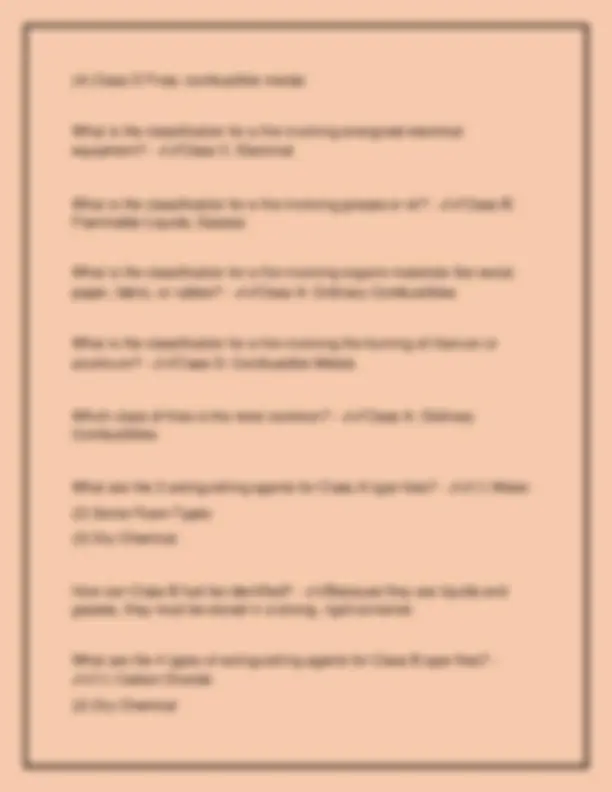
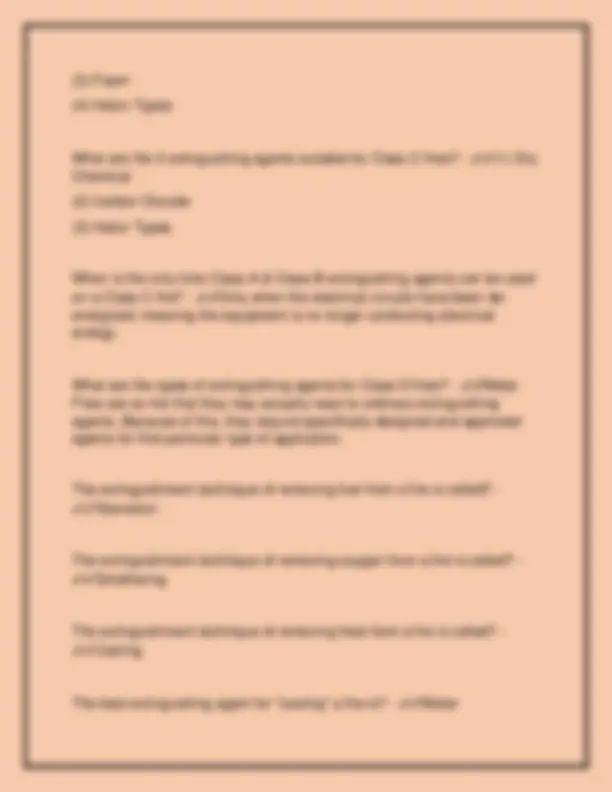
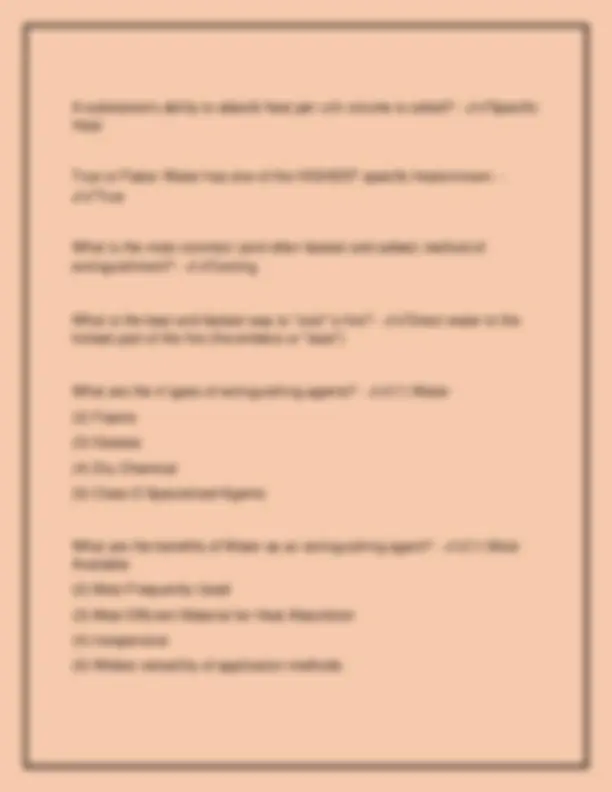
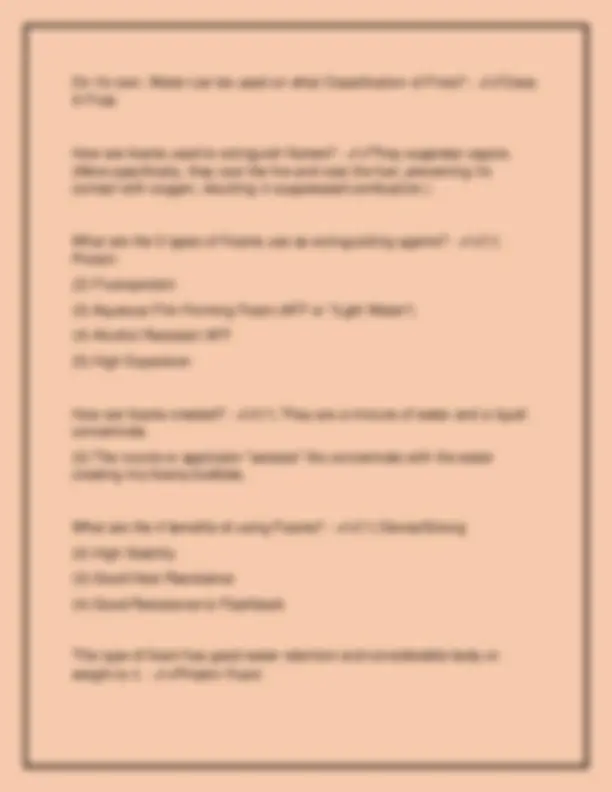
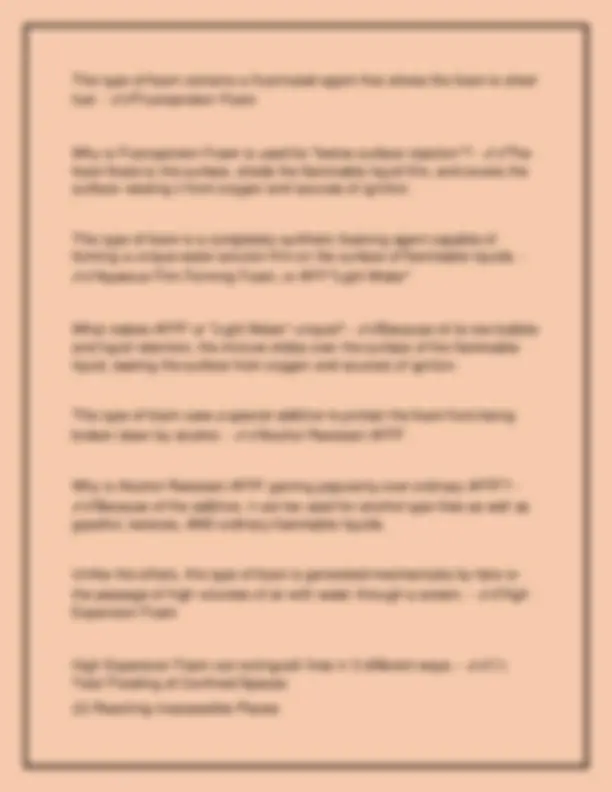
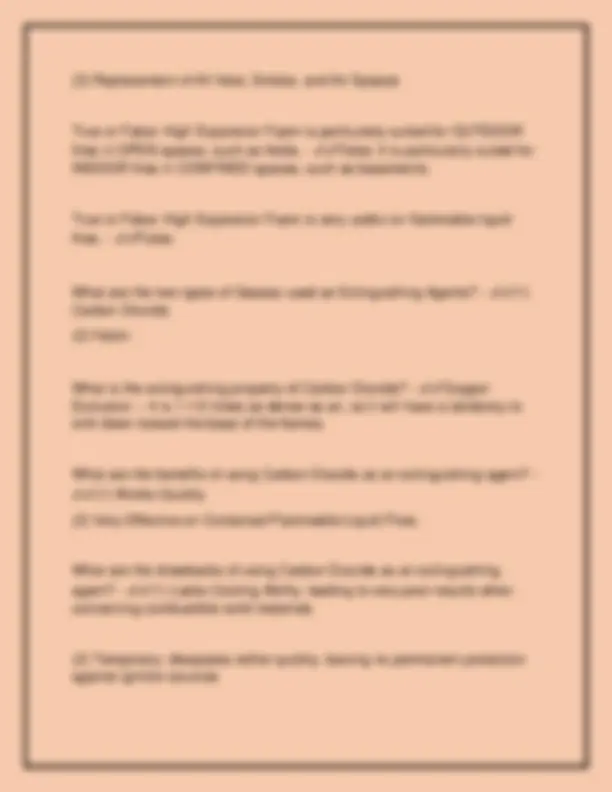
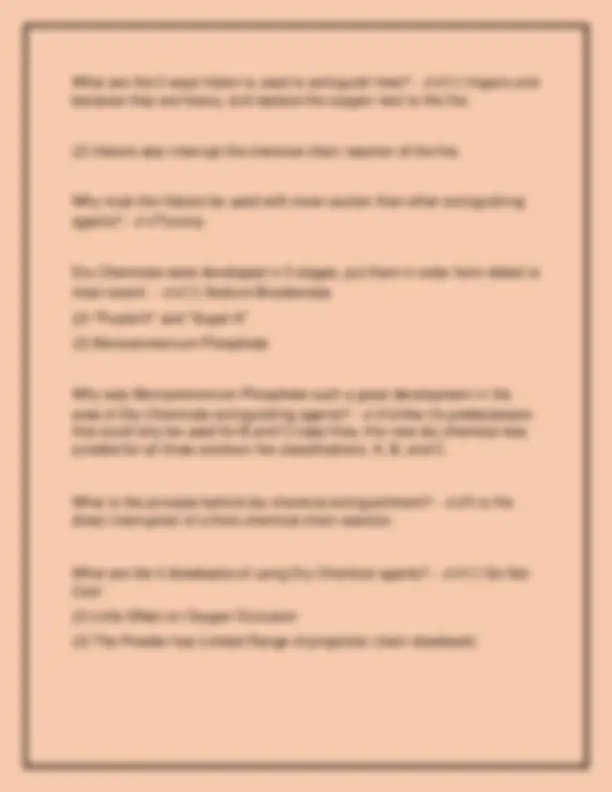
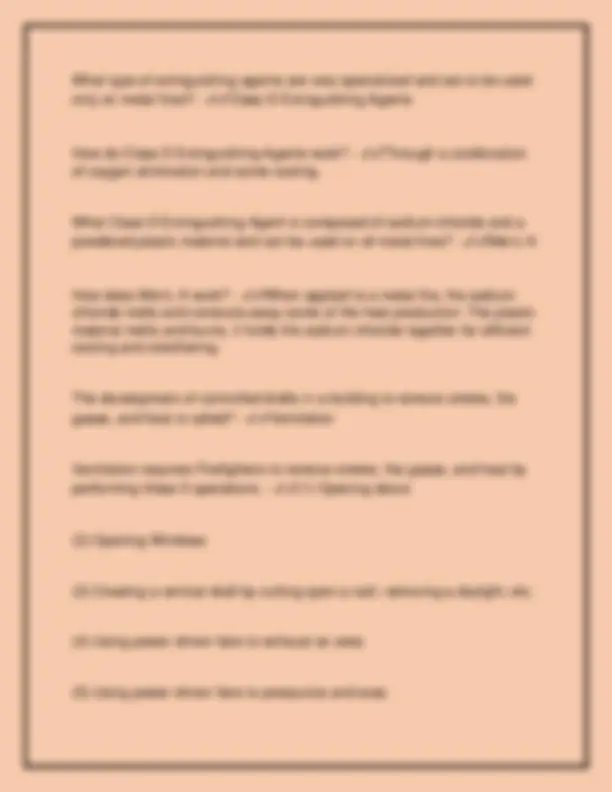
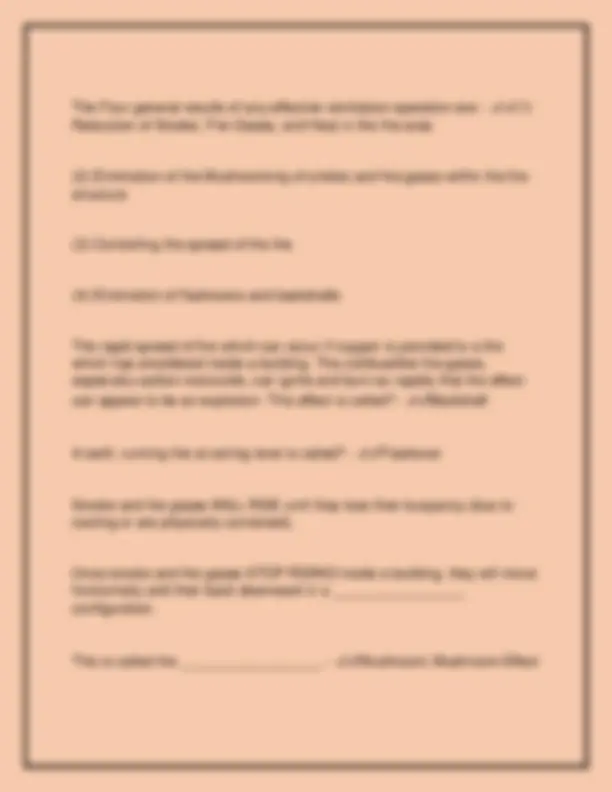
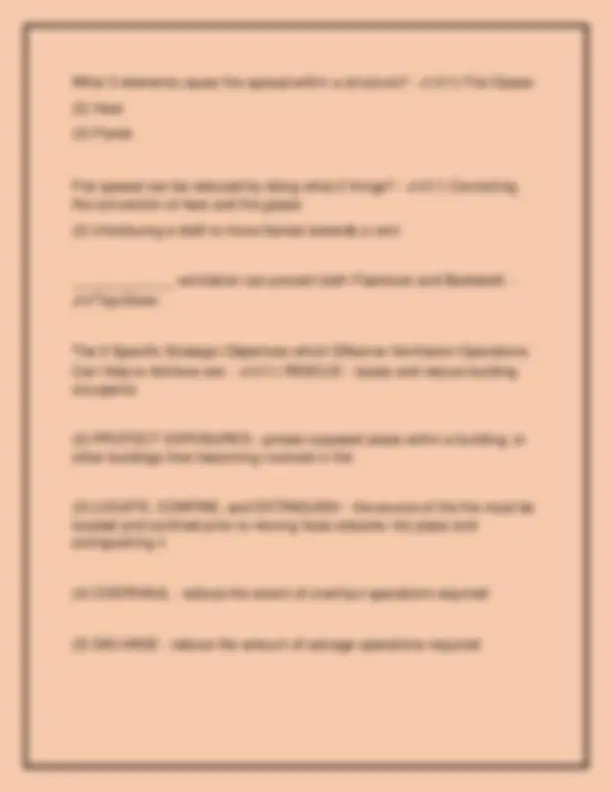
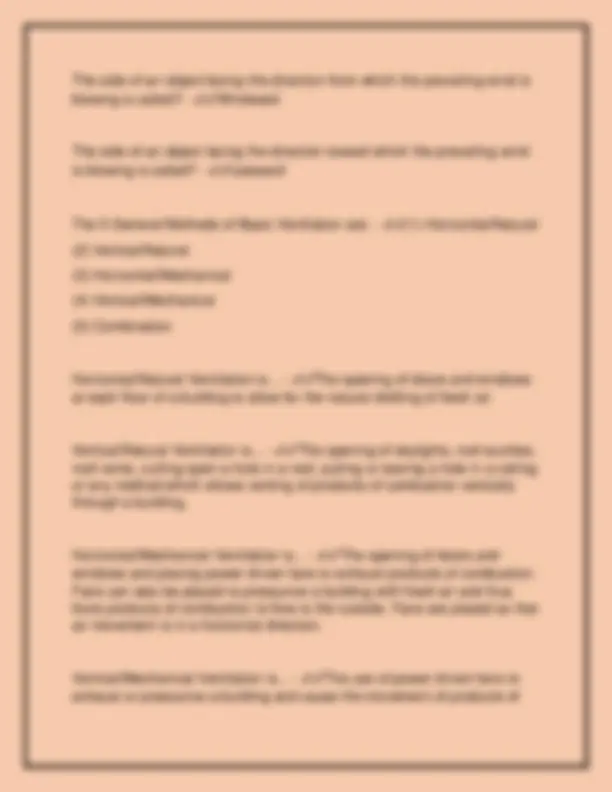
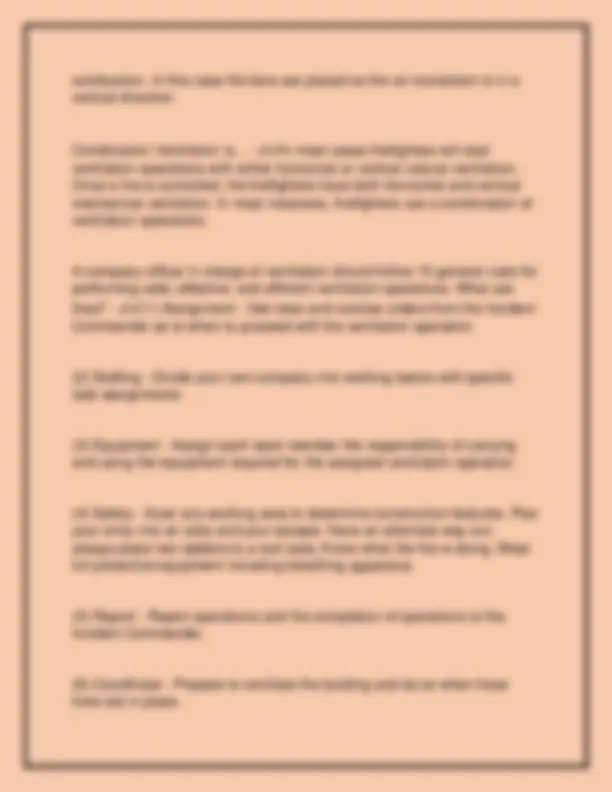
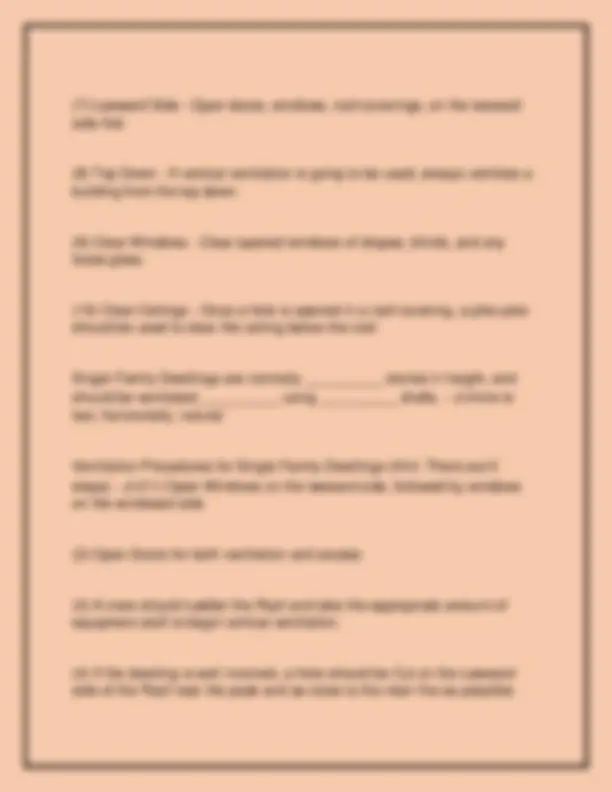
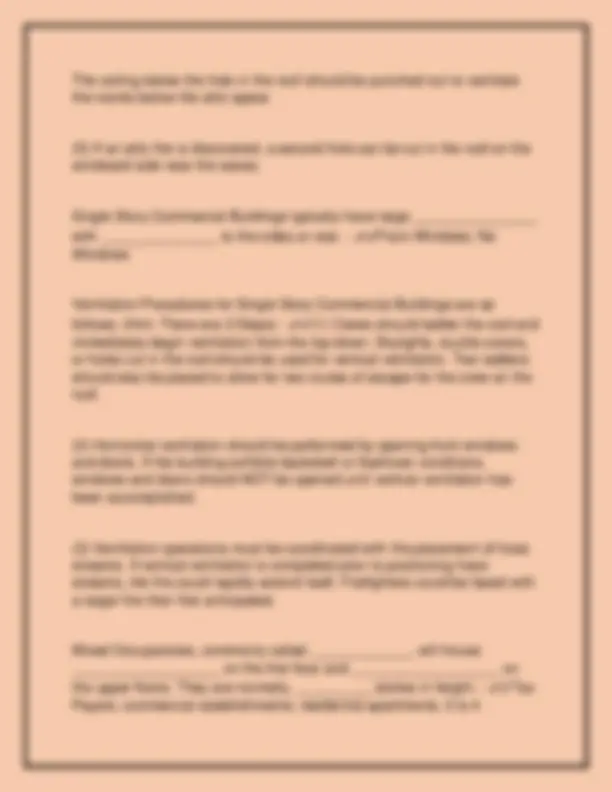
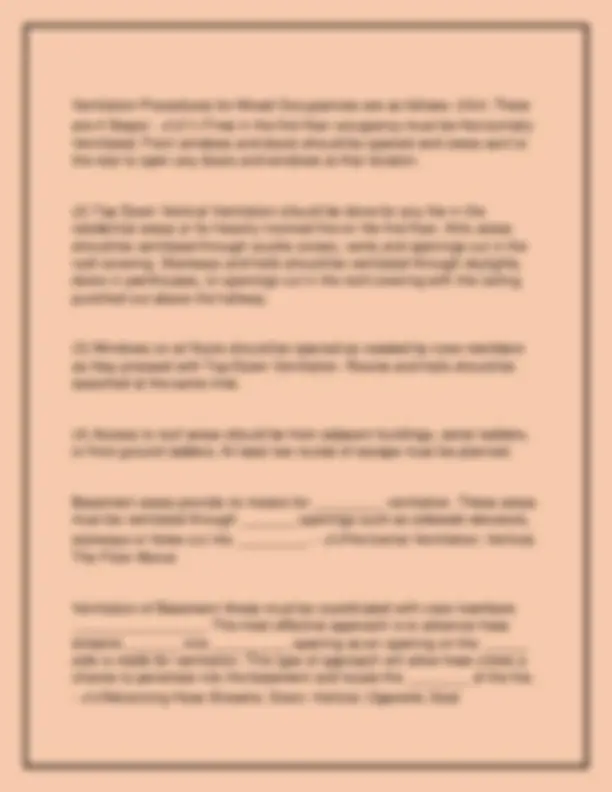
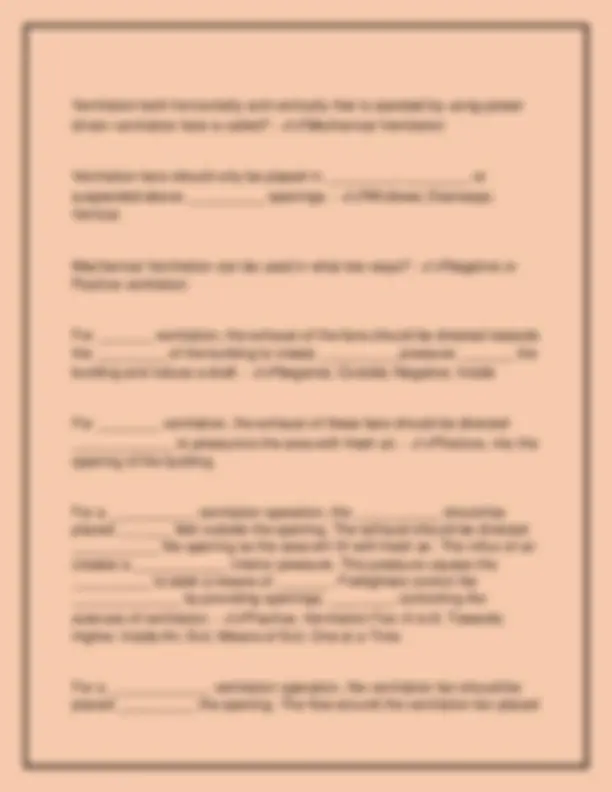
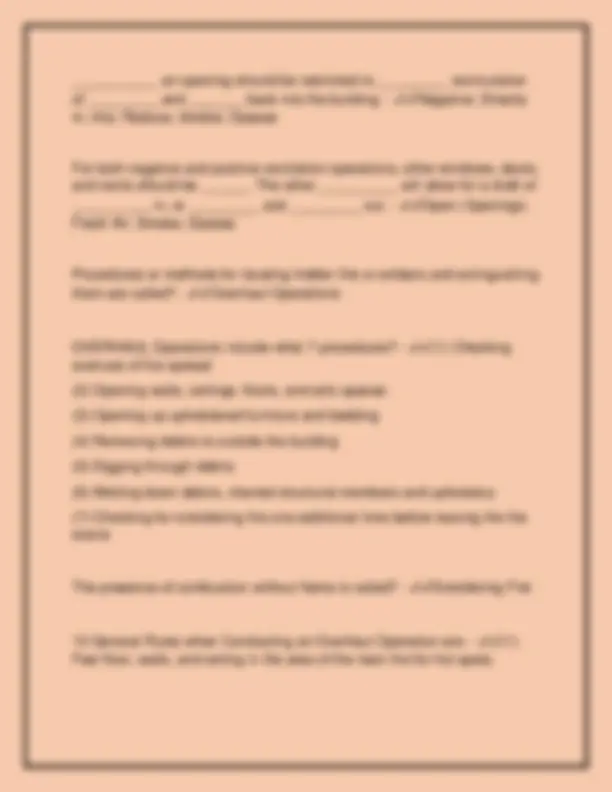
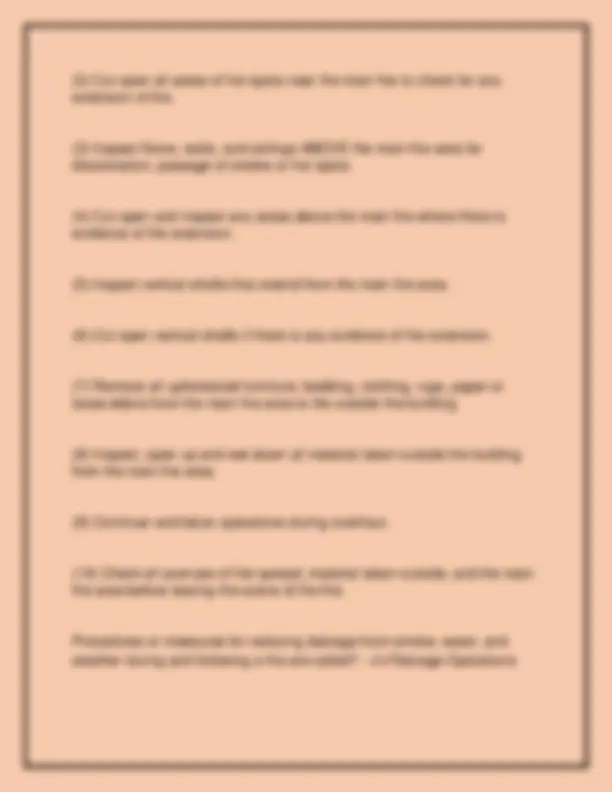
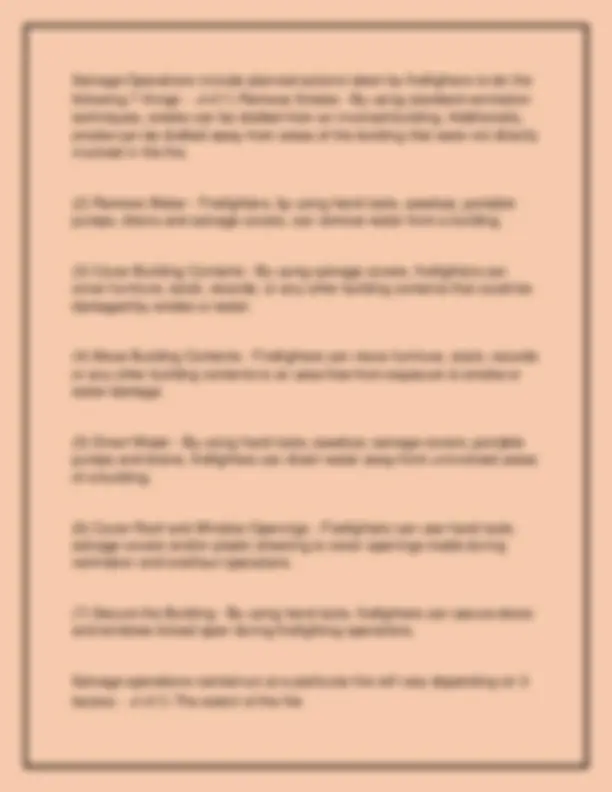
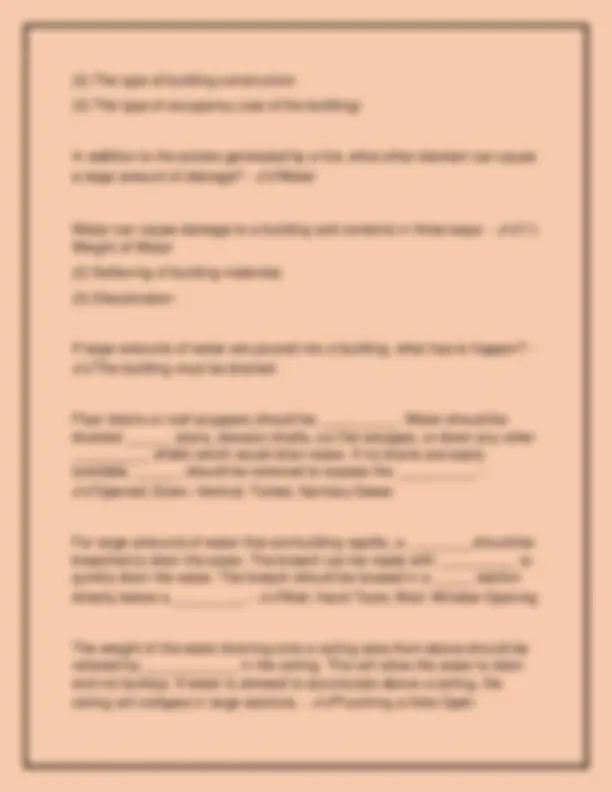
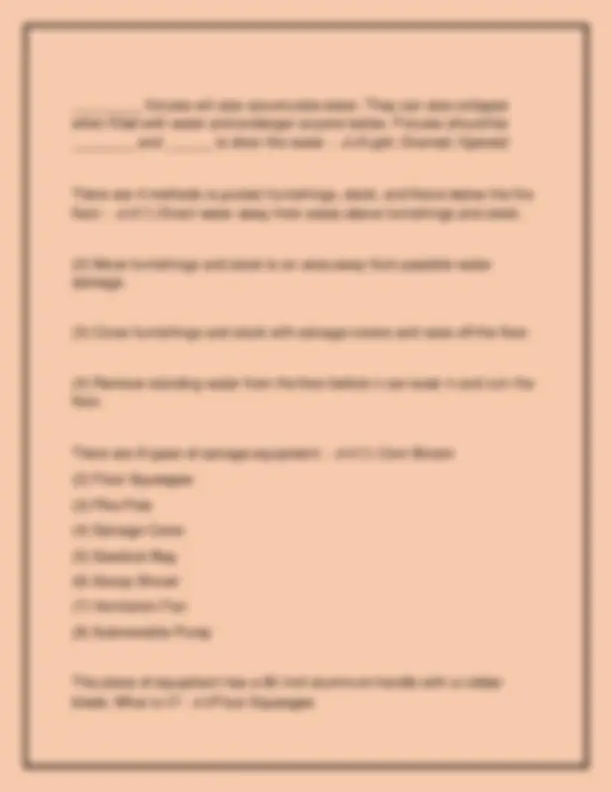
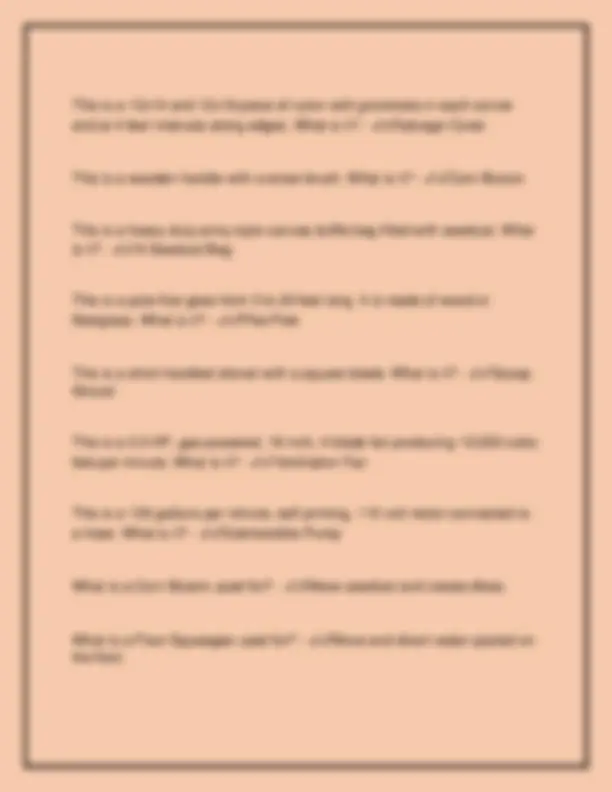
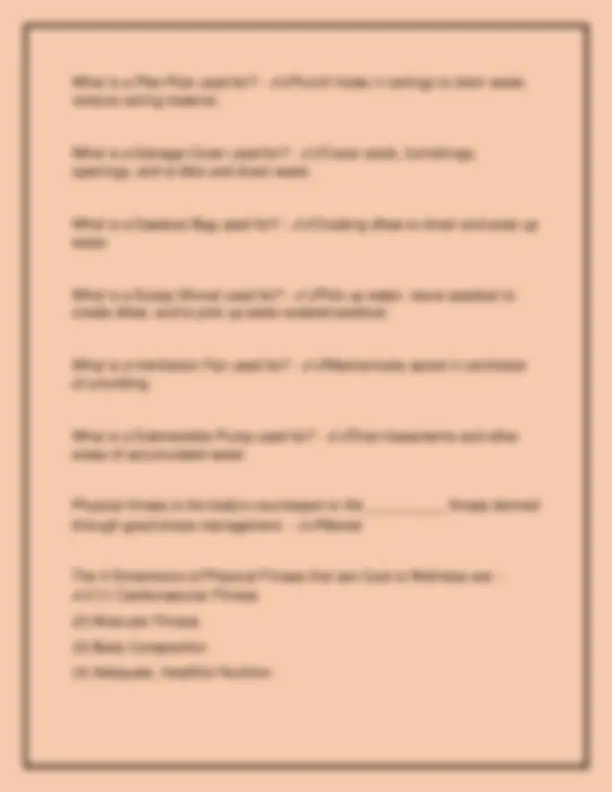
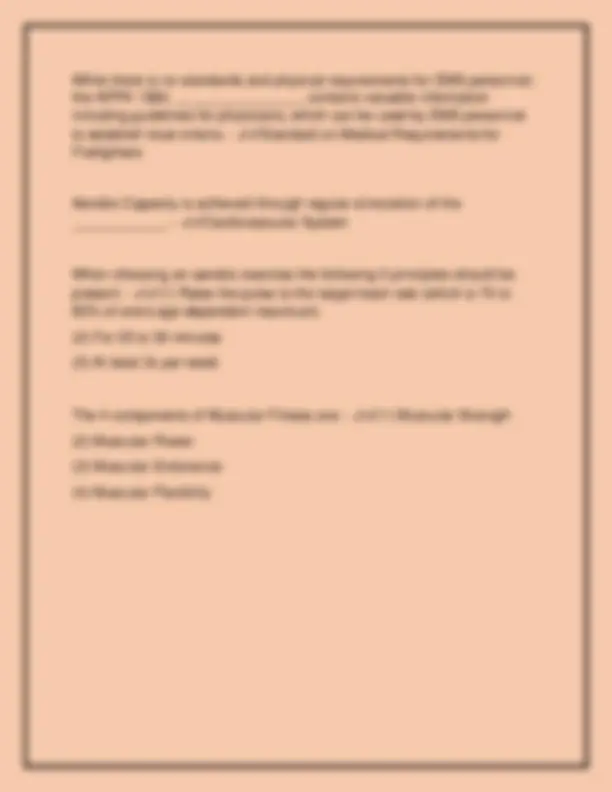


Study with the several resources on Docsity

Earn points by helping other students or get them with a premium plan


Prepare for your exams
Study with the several resources on Docsity

Earn points to download
Earn points by helping other students or get them with a premium plan
Community
Ask the community for help and clear up your study doubts
Discover the best universities in your country according to Docsity users
Free resources
Download our free guides on studying techniques, anxiety management strategies, and thesis advice from Docsity tutors
What kind of calls do firefighters respond to most often? - ✔✔Medical Emergencies What are "Fire Lines" and what are they used for? - ✔✔These are made by cutting down trees and digging out all other combustible vegetation, creating bare land in the path of the fire that deprives it of fuel. They are used to fight forest fires. What are Smoke Jumpers? - ✔✔Specialized teams of elite firefighters who parachute from airplanes to reach otherwise inaccessible areas. What do firefighters do between calls? - ✔✔(1) Clean and maintain equipment; (2) Conduct practice drills and fire inspections; (3) Participate in fitness activities; (4) Prepare written reports on fire incidents; (5) Review fire science literature What are the risks of firefighting? - ✔✔Death or injury from: (1) sudden cave-ins of floors; (2) toppling walls; (3) traffic accidents when responding to calls; (4) exposure to flames and smoke; (5) contact with poisonous, flammable, or explosive gases & chemicals;
Typology: Exams
1 / 49

This page cannot be seen from the preview
Don't miss anything!










































What kind of calls do firefighters respond to most often? - ✔✔Medical Emergencies What are "Fire Lines" and what are they used for? - ✔✔These are made by cutting down trees and digging out all other combustible vegetation, creating bare land in the path of the fire that deprives it of fuel. They are used to fight forest fires. What are Smoke Jumpers? - ✔✔Specialized teams of elite firefighters who parachute from airplanes to reach otherwise inaccessible areas. What do firefighters do between calls? - ✔✔(1) Clean and maintain equipment; (2) Conduct practice drills and fire inspections; (3) Participate in fitness activities; (4) Prepare written reports on fire incidents; (5) Review fire science literature What are the risks of firefighting? - ✔✔Death or injury from: (1) sudden cave-ins of floors; (2) toppling walls; (3) traffic accidents when responding to calls; (4) exposure to flames and smoke; (5) contact with poisonous, flammable, or explosive gases & chemicals;
(6) exposure to radioactive or other hazardous materials that may have immediate or long-term effects on their health What are some typical "On Duty" hours for Firefighters? - ✔✔(1) 48 hours ON/96 hours OFF; (2) 24 hours ON/48 hours OFF + extra day off at intervals; (3) DAY SHIFTS of 10-hours for 3-4 DAYS, NIGHT SHIFTS of 14-hours for 3 - 4 NIGHTS, with 3-4 days off What kind of settings do firefighters work in? - ✔✔(1) Urban & Suburban areas; (2) Airports; (3) Chemical Plants; (4) Industrial Sites; (5) Rural Areas like grasslands and forests What are firefighters in the Hazardous Materials Unit trained to do? - ✔✔These firefighters are trained for the (1) Control, (2) Prevention, and (3) Cleanup of oil spills, and other hazardous materials incidents. In what settings would firefighters typically use conventional firefighting equipment and tactics? - ✔✔(1) Urban & Suburban; (2) Airports;
What services does a "Public Safety Organization" oversee? - ✔✔(1) Fire Prevention (2) Public Fire Education (3) Safety (4) Emergency Medical Services Why are some local and regional fire departments being consolidated into countywide establishments? - ✔✔(1) Reduce Administrative Staff & Cut Costs (2) Establish Consistent Training Standards & Work Procedures What 3 exams do applicants have to pass to qualify for municipal firefighting jobs? - ✔✔(1) Written Exam (2) Physical Strength, Stamina, Coordination, & Agility (3) Medical Examination & Drug Test What 6 areas of study are entry-level firefighters trained on in the academy? - ✔✔(1) Firefighting Techniques (2) Fire Prevention (3) Hazardous Materials Control (4) Local Building Codes (5) Emergency Medical Procedures (6) Firefighting & Rescue Equipment What are the 12 personal qualities needed for firefighters to be successful?
(3) Courage (4) Mechanical Aptitude (5) Endurance (6) Strength (7) Sense of Public Service (8) Initiative (9) Good Judgment (10) Dependability (11) Good Social Skills (12) Efficiency What areas should a firefighter acquire expertise in if they are interested in progressing to higher level positions? - ✔✔(1) Advanced Firefighting Equipment & Techniques (2) Building Construction (3) Emergency Medical Technology (4) Writing (5) Public Speaking (6) Management & Budgeting Procedures (7) Public Relations What do opportunities for promotion depend on? - ✔✔(1) Written Examination Results (2) Job Performance (3) Interviews (4) Seniority
(2) Negatively Affects Memory & Mental Stability (3) Sparks Interpersonal Conflict (4) Increase Accident-Proneness, Absenteeism, & Attrition (5) Wipes Out Good Morale (6) May lead a person to take unusual risks (7) Makes it difficult to maintain physical conditioning What is stress? - ✔✔A nonspecific physical response of the body to the events and conditions of life. It is NOT a disease or affliction. Stress is the leading cause of or contributor to what 10 physical ailments? - ✔✔(1) Heart Disease (2) Hypertension (3) Ulcers (4) Arthritis (5) Diabetes (6) Cancer (7) Lowered Immunity to Disease (8) Alcoholism (9) Depression (10) Suicide What is a Stressor? - ✔✔Anything that triggers the stress response. It may be physical, emotional, environmental, financial, spiritual, or social. What are common firefighter stressors? - ✔✔(1) Administrative Hassles
(2) Threat of Infectious Disease or Hazardous Materals Exposure (3) Shift Work (4) Repetitive or Routine Tasks (5) Inactivity (6) Weather & Temperature Extremes (7) Traffic (8) the 24-hour Nature of the Job What is Cumulative Stress? - ✔✔Small stressors that accumulate into a large stress-related problem What are Rapid Onset Stressors? - ✔✔Stressors that are sudden and extensive What is Critical Incident Stress - ✔✔When stress levels peak abruptly The complex interactions between the endocrine system and the nervous system are categorized as what kind of response? - ✔✔"Flight or Flight" Syndrome True or False: The physiological response to stress is different for every person. - ✔✔False. Physiological responses to a stressor relate to the innate and powerful instinct to survive. No matter how a person responds emotionally or cognitively to a stress, the physiological response is always the same. True or False: Positive Stressors have the SAME stress responses as negative ones. - ✔✔True.
(3) Cynicism (4) Diminished Job motivation What are the 7 physical signs and symptoms of stress? - ✔✔(1) General Muscular Tension (2) Headache and Neck Stiffness (3) Pain between the Shoulder Blades or in the Lower Back (4) Mild but Chronic Respiratory Illness (5) Nonspecific gastrointestinal upset (6) Feeling "like a coiled spring" (7) Clenching of the jaw or fists What are the 9 emotional and behavioral signs and symptoms of stress? - ✔✔(1) Feeling Overwhelmed (2) Feeling Helpless/Hopeless (3) Crying Easily & Without Obvious Cause (4) Sleep Irregularities (too much or too little) (5) Eating Irregularities (too much or too little) (6) Increasingly Hair-Trigger Emotions, especially irratibility (7) Overuse of Seemingly Comforting Substances, such as Alcohol, Caffeine, Nicotine, Food, and prescribed and illicit drugs. (8) Sense of Isolation or Withdrawal from the World (9) Feeling Relentlessly Pressured What are the 5 Severe Signs of Distress? - ✔✔(1) Major Depression (2) Feelings of Persecution
(3) Paranoia (4) Increased Levels of Substance Abuse (5) Suicidal Feelings or Gestures The U.S. Department of Transportation reports that the risk of having a motor vehicle crash is at least ___ times higher between ___________ and that as many as ____________ traffic crashes per year may be sleep- related. - ✔✔(1) 10 times (2) 4am to 6am (3) 200, Avoiding ____________ Deprivation is a professional responsibility. - ✔✔Chronic Sleep What negative responses are commonly witnessed in people who are too tired? - ✔✔(1) Loss of Compassion (2) Hair-trigger Anger (3) Diminished Judgment & Mental Acuity What are the 3 Basic Ways to Attack Stress? - ✔✔(1) Consider which stressors can be changed or eliminated (2) Change attitudes regarding the stressor (3) Minimize the physical response to the stressor by employing various stress management techniques. What are 7 Physical Stress Management Tactics that can help an individual change the physical response to stress? - ✔✔(1) Exercise
What is a model program for supporting fire families? - ✔✔ASSIST: Answers for Spouses by Spouses through Interaction, Support, and Training. What process does CISM stand for and what is it's purpose? - ✔✔Critical Incident Stress Management: to assist fire personnel in processing the stress of critical incidents. What 7 types of events typically result in critical incident stress? - ✔✔(1) Traumatic death or disability of a co-worker (2) Traumatic death or serious injury to children (3) Mass casualty events (4) Prolonged events (5) Death or injury to a bystander caused by the emergency department while in the course of providing emergency care (6) Events drawing media attention (7) Symbolic events, both public (9/11) and personal What are the 6 symptoms of Thyroxine release? - ✔✔(1) Fine Muscle Tremors (2) Worry and/or anxiety (3) Paranoia (4) Insomnia (5) Racing thoughts (6) Increased internal body temperature (7) Increased secretion of digestive juices (8) Decreased heart strength
(9) Increased probability of heart failure A number of atoms that have chemically bonded together are called? - ✔✔A Molecule The ratio of the density of a vapor, as compared to the density of an equal volume of air, with air having an assigned value of 1 is called? - ✔✔Vapor Density What happens if a vapor has a density value GREATER than 1? - ✔✔The vapor is heavy and will sink and spread along the floor or lowest surface available. (Ex. Gasoline, Kerosene, Jet Fuels, Acetone, & Benzene) What happens if a vapor has a density value LESS than 1? - ✔✔The vapor is lighter than air and will rise. (Ex. Hydrogen Gas) What happens if the vapor has a density value EQUAL to 1? - ✔✔The vapor is the same weight as air and would mix with the air easily. (Ex. Carbon Monoxide) Why is in helpful for firefighters to have a good understanding of a substance's vapor density? - ✔✔They may be able to predict the spread or
True or False: Anything that can burn has a flash point. - ✔✔True The flash point of a substance we usually call "flammable," such as gasoline, is much _________ than the flash point of a substance we wouldn't call flammable, such as steel. - ✔✔Lower What are the 3 steps taken to determine the flash point of a substance? - ✔✔Step 1: Ensure that the pressure and oxygen content of the atmosphere are constant and that the substance being tested is pure. Step 2: Beginning at a very cold temperature, the substance is heated very slowly and begins to produce vapors. Step 3: The Vapors are given an external ignition source (a test flame, for example) and the temperature at which these vapors flash or burn is considered the flash point. Flash Point determines the ___________ of all liquids and solids. - ✔✔Flammability The LOWEST temperature at which a substance produces ignitable vapors sufficiently fast enough to "flash" when exposed to an outside ignition source and then CONTINUES TO BURN is called __________________. - ✔✔The Fire Point The process of initiating self-sustained combustion - ✔✔Ignition
Combustion is a _______ reaction. - ✔✔Chemical What are the two ways a substance can reach its ignition temperature? - ✔✔(1) Piloted Ignition (2) Auto-Ignition The introduction of an EXTERNAL ignition source like a spark, match or open flame is called? - ✔✔Piloted Ignition The heating of a substance to the point where it ignites by itself is called? - ✔✔Auto-Ignition A temperature a substance must be heated to in order to cause self-ignition is called? - ✔✔Auto-Ignition Temperature A mixture of flammable vapors and air, expressed as a percent, above or below which no ignition can occur. - ✔✔Explosive Range (a.k.a. Flammable Range or Flammable Limits) True or False: A vapor that is "too lean" will not ignite. - ✔✔True, because the percent mixture is LESS than the lower limit. True or False: A vapor that is "too rich" will ignite. - ✔✔False, because the percent mixture is above the vapor limit.
Physical Characteristics of Ethanol (Flash Point, Fire Point, Ignition Temperature, Explosive Range, Vapor Density, & Specific Gravity) - ✔✔Flash Point: 55 F Fire Point: 57 F Ignition Temperature: 800 F Explosive Range: 4.3% - 19.0% Vapor Density: 1. Specific Gravity: 0. The rapid combustion of oxygen and fuel in a chemical reaction which liberates large amounts of heat and light which is visible as a flame is called? - ✔✔Rapid Oxidation What is an example of Rapid Oxidation? - ✔✔Fire The slow combustion of oxygen and fuel in a chemical reaction that releases unnoticeable amounts of heat and light is called? - ✔✔Slow Oxidation What is an example of Slow Oxidation? - ✔✔The rusting of an old nail or the tarnishing of a piece of silver A simple graphic representation of the components necessary to have fire is called? - ✔✔The Fire Triangle What are the 3 components necessary to have fire? - ✔✔(1) Fuel (2) Oxygen
(3) Heat The "fourth side" of the Fire Triangle added to explain the unique extinguishing capabilities of some fire extinguishing agents is called? - ✔✔The Fire Tetrahedron. The extinguishing method t that interrupts the chemical reaction between fuel and oxygen, by upsetting or destroying the molecules that would otherwise combine with oxygen, is called? - ✔✔Chain Reaction Interruption When is wood in it's most flammable form? - ✔✔Small, dry pieces that are positioned vertically rather than horizontally. The speed with which a fuel ignites and burns depends on the available ______________. - ✔✔Surface Area True or False: The MORE exposed surface area, the easier the ignition and the faster the fire burns. - ✔✔True In order to sustain life, the oxygen content of air must be no less than ______. - ✔✔16% True or False: An open burning fire needs the SAME amount of oxygen as that required to sustain life. - ✔✔True True or False: The LOWER the percent oxygen, the faster the fuel will ignite and burn. - ✔✔False, the HIGHER